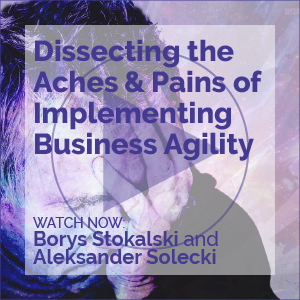Agile Lineout — A Contextual Alternative to Scrum: A Q&A
Insights from Study Help Maximize Business Architects’ Strengths
The Enterprise Architect as Troubleshooter
Achieve UN Sustainable Development Goals with BA, When Good Data Goes Bad, more!
The Role of IT in Citizen Development
In the age of transformation, advances in artificial intelligence are rapidly disconnecting end users from the complexity of the technology they use. The result is a world where we can do many things without having to understand how they work. For example, Amazon’s Alexa lets users ask complicated questions using natural language input and receive immediate answers.
The Role of IT in Citizen Development
In the age of transformation, advances in artificial intelligence are rapidly disconnecting end users from the complexity of the technology they use. The result is a world where we can do many things without having to understand how they work. For example, Amazon’s Alexa lets users ask complicated questions using natural language input and receive immediate answers.
Challenges to Low-Code Adoption
Challenges to Low-Code Adoption
The Importance of a Well-Defined Business Vocabulary
Enforcing Compliance as Code
Supporting Digital Twins with Edge Computing
The Essentials of Great Innovation Teams, Part II: Building Meaningful Missions
The Implications of a Transformation
A digital transformation is no less than a change in an organization’s activities, business processes, competencies, and models that allows it to fully leverage the opportunities of current and future emerging digital technologies. The effort, expense, and pain involved with this type of change may lead some to question the necessity.
























